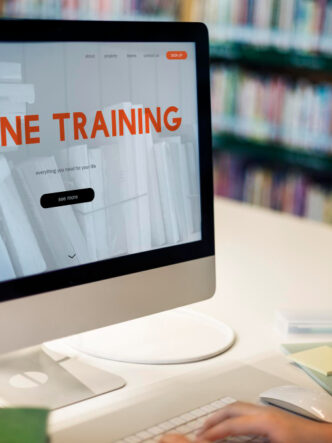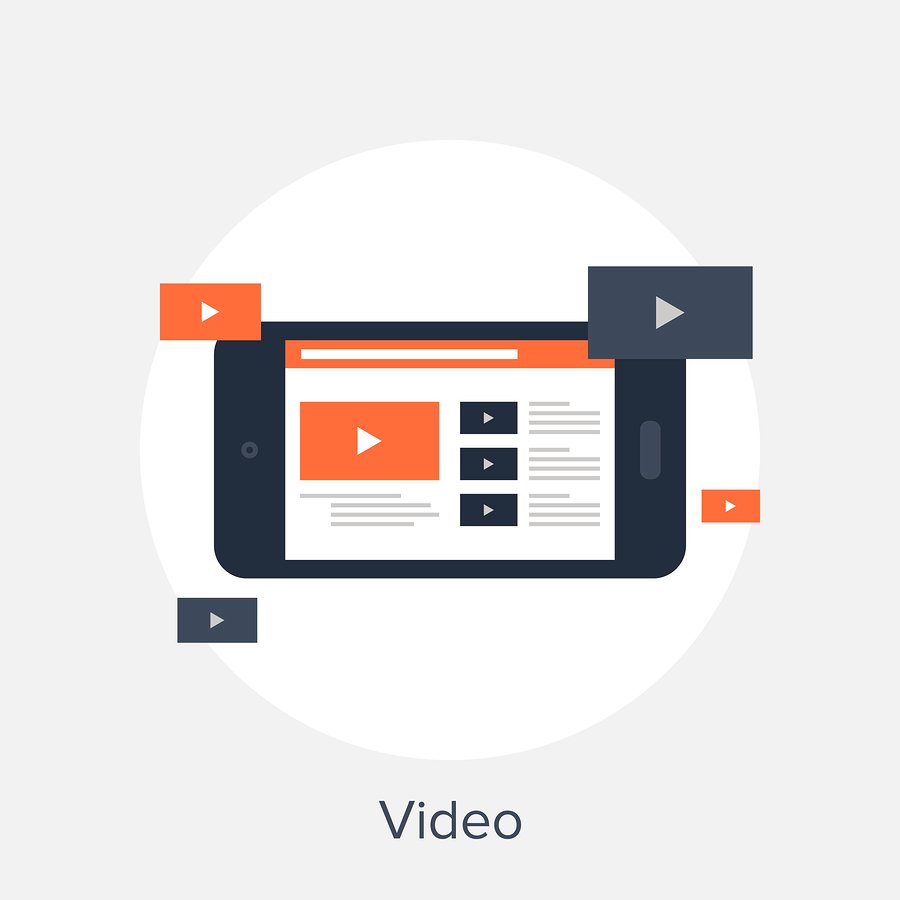As per a report by Orbis Research, global e-Learning market is expected to reach a value of $275.10 billion by 2022 at a CAGR of 7.5%.

At the same time, there’s the global video streaming industry that is set to reach $70.05 billion by 2021, at a CAGR of 18.3%, as per a report by MarketsandMarkets research. With almost 5 billion videos being watched on YouTube every single day, it doesn’t get bigger.
Online video consumption continues to grow, and it’s no secret that the market for online courses is huge. Pair video and online courses together and you have a perfect combination. Using video creates an immersive, engaging learning experience.
There’s great potential to make money through online courses, and video is one of the best teaching tools available. People like to learn from videos – they want to watch moving images and listen to someone speak.
It’s not as difficult as you think
Many thoughts may swirl around in your brain when you think about creating an online course. You question your expertise, think you don’t have enough capital and worry about the technical skills required, especially when it comes to creating videos.

This causes you to procrastinate and avoid moving out of your comfort zone. In fact, it’s not as difficult as you may imagine due to the plethora of tools and software available.
When you’re creating your first course, you think it has to be some big, in-depth course that covers every aspect of a topic. That’s a mistake and may just be a waste of time. All you may need to create for your first course are some practical, helpful interactive videos and worksheets.
Decide on your topic
Ask yourself some questions like the following ones to find a suitable topic:
Are you an expert in any specific area?
Think about the type of advice friends or family tend to ask you for. Do they want your help to master some software? Fix an appliance? Give them décor advice? Help them with their financial planning? You could create videos detailing every step of the process to help others who may want this type of advice.

What are you passionate about and excited to teach others?
Do you want to pass on your knowledge about watercolor painting or embroidery? Does container gardening make you feel inspired? Are you excited about the progress you’ve made towards establishing an eco-friendly home? If you create a course to teach others about one of your hobbies or passions, you have a great opportunity to create demo videos showing others exactly how to do a project, step-by-step.
Is there a topic you’re interested in that you could teach others as you learn?
You can teach what you already know, but you can also be the novice and teach as you learn yourself. Choose a topic you’re interested in and read all the information you can lay your hands on.
Joseph Michael Nicoletti did exactly this when he started teaching Scrivener. He would study a feature and then record a short 3-5 minute tutorial. His educational videos proved to be extremely popular. He now makes nearly $1 000 a day teaching Scrivener to writing professionals.
The expert who knows the most may not be the best teacher. Someone who is learning may have more understanding of the issues others face and not inadvertently skip out steps in the learning process.
Does your topic have profit potential?
You should also consider profit potential. You have more potential for profit if you create a course people will pay for because it provides a solution of some kind for them.

You may come up with a great online course that no-one else is offering – the only problem is that no-one may be interested in buying it. The more specific the problem you solve, the more likely people are to buy it.
Research and plan
Write down all your ideas for potential topics and sub-topics. You may consider yourself an expert, but you will still need to do research and find out as much as you can. You want to know more about your competitors and what they are offering too. Find literature and external links you can use to reinforce your ideas.
Create your course outline
To create your course outline, you must put all your topics and subtopics into a logical order. You can organize your course material better if you understand your goals and have a logical sequence of learning milestones.
You will need to decide on what learning strategies, instructional videos and lesson materials you need for each part of your course. You need to know what you expect learners to be able to do by the end of each topic.
Think about how it will bring students one step closer to the goal of your course and how you will assess what they have learned.

Test your course
Before you spend too much time creating your course, find out whether it has potential. You don’t want to spend too much time creating a course that no-one will buy. One way to test it is to create a free, mini email course.
Before you start creating videos, worksheets and other resources, create a mini-course and deliver it to your mail list to test the reaction and ask for feedback. Modifying your course as you go by receiving feedback gives you far more potential for success.
Some people even manage to pre-sell their courses based on a sales page alone. Perhaps you launch your course having only created the first two sections, and someone tells you your microphone has an echo. Imagine if you’d created your whole course already and couldn’t fix the issue!
Create your course content
Most online courses come in video format. If this intimidates you, remember that everyone has to start somewhere. Your first videos may not as professional looking as some of the top course videos but as long as it is good quality and you deliver valuable, helpful content, you have a good shot at selling it.

For example, if you’re an accountant and you want to teach figures, all you may need is a whiteboard standing on a chair to start creating informative videos.
Easy to use software and tools
Your aim is to deliver practical, helpful advice and you don’t need a huge budget to do so. You don’t have to hire a videographer today. Plenty of software and easy-to-use tools are available to make the process much easier than it ever was in the past.
Types of videos for different purposes
Many different types of videos can be used to create a more powerful learning experience. Here are some of them:
Introductory video: Storytelling is a powerful way to introduce your course. You could use an animated video introducing a character to capture audience attention and act as a guide through the course. Online tools such as Vyond and Powtoon enable you to create an animated video easily.
Screen recordings: A good way to teach others is to record a video of your screen as you perform various actions. Camtasia is a good choice for editing screen recordings.

Interactive videos: When deciding on videos for each topic, remember that learners need to be active instead of passive to learn. It is not enough to make videos of yourself speaking into the camera. Students need to be able to apply the content they’re learning – assignments, quizzes and interactive elements in video editors can turn them from passive into active learners.
Using this type of video you can cover the main ideas and provide opportunities to link to other videos, make decisions or link to supporting content. A viewer might be able to tap on objects visible on the screen to learn more about that object. Some tools to use to add interactivity to your videos are Raptmedia or Viddler.
Demo videos: It’s much easier to follow a demo video than trying to read detailed instructions. Videos can capture best practices and technical or business processes. Demos don’t have to be dull – they can be fun and engaging.
Testimonial videos: People respond to video testimonies from others who have benefited from a course more than to any promotion from you. All it takes is a couple of 20-second video testimonials to show the value of the course content and how it has solved a problem for someone.
Interviews: Short interviews with famous people or industry experts can convey key information effectively. Ask an interviewee to share a personal experience followed by a lesson learned and best practices. Discuss the topic before shooting, pitch your question and allow for a spontaneous response.

Decide on your launch strategy
It’s important to educate your email subscribers before you sell to them. Warm them up and generate demand for what you’re teaching. You can start by sending them educational video content, such as targeted blog posts and videos. It’s showing them what kind of content you offer, its quality and how it can benefit them in their daily lives.
Finally, after educating your audience with emails, you can inform them that your training program is available. In this email, you could include a video showing what’s in the course, information about the pricing and perhaps details about a surprise bonus.
Concluding thoughts
It used to be difficult to create an online course and get it up and running. Today it has become much easier due to the advances in technology. You don’t need a videographer or expensive equipment to make your videos. Using available software, platforms, and tools, you can create a simple yet effective course, protect your content, sell it and manage your students.









